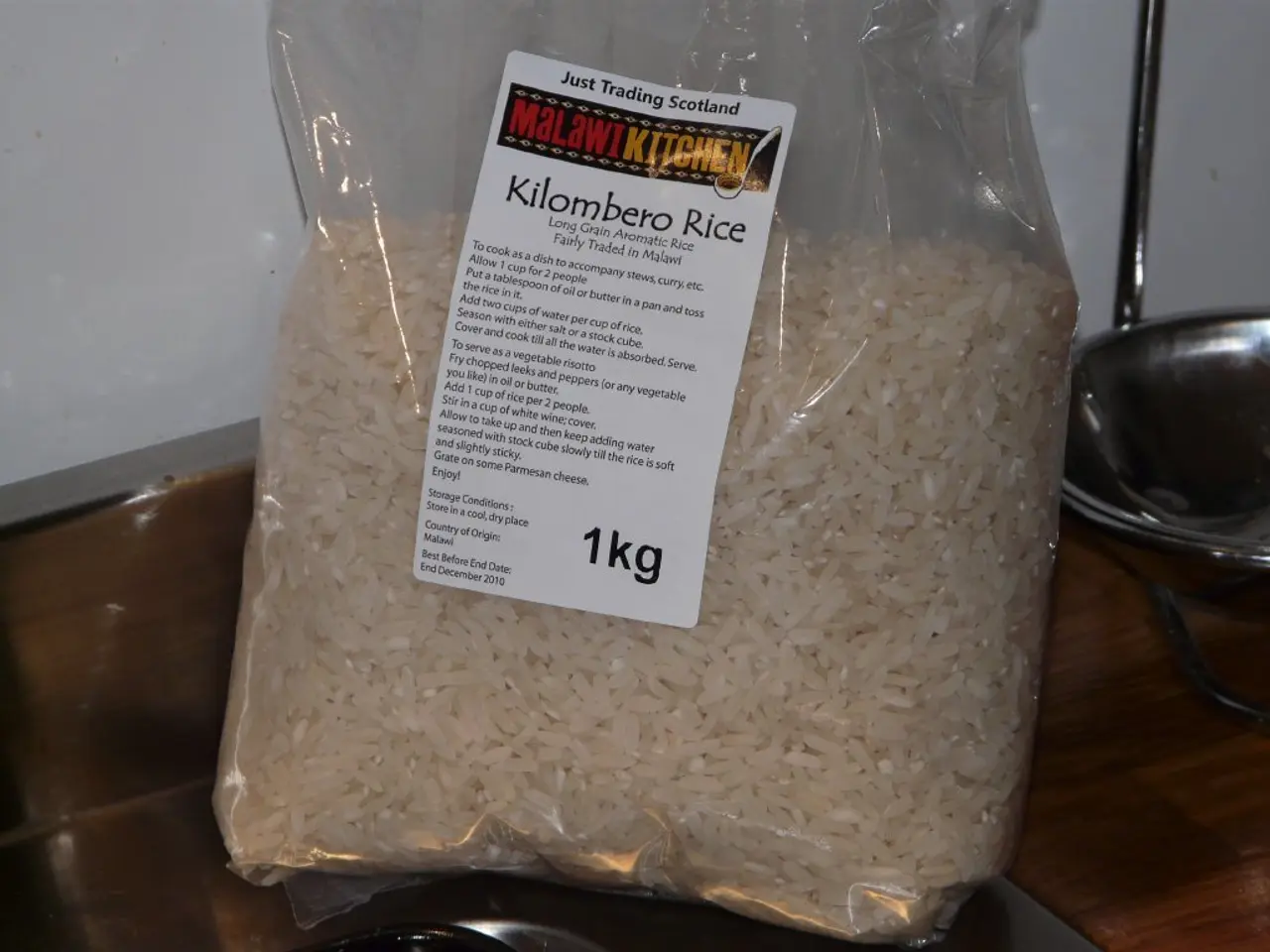Increase in rice exports yet reduction in surplus reported
In a surprising turn of events, Vietnam is projected to become the world's second-largest rice importer in 2025, according to the US Department of Agriculture (USDA). This forecast comes despite Vietnam's status as a major rice exporter, with its rice exports growing steadily.
Vietnam's rice exports in the first seven months of 2025 reached 5.5 million tonnes, worth US$2.81 billion, marking a 3.1% increase compared to the same period last year. However, the country's domestic consumption needs are also rising, leading to the need for imports to meet this demand and support local market stability.
The increase in domestic consumption is due to a combination of factors. Domestic demand for higher-quality rice varieties, which may not be sufficiently produced locally, is on the rise. Local farmers in Vietnam have shifted to growing fragrant rice varieties, leading to an increased importation of milled rice.
Vietnam primarily imports paddy from Cambodia for processing and re-export, with much of this paddy grown on land leased by Vietnamese farmers. The imported paddy from Cambodia is used for processing and re-export, not for consumption as is. Vietnam also imports milled rice from India for use in making noodles, rice paper, and other products, but not for consumption as is.
The value of Vietnam's rice exports in the first seven months of 2025 is down 15.9% compared to the same period last year, and the rice trade surplus has dropped by 30% to US$1.81 billion. Despite this, the overall trade benefits of Vietnam's rice imports outweigh the concerns, as stated by the Vietnam Food Association chairman.
The global rice market is facing oversupply and price declines, making exports less profitable and prompting Vietnam to balance export with securing affordable supply domestically. Logistical issues and infrastructure capacity limit internal distribution efficiency, creating scenarios where Vietnam must import rice to supplement local shortages despite high export volumes.
Neighboring countries like the Philippines remain large importers of Vietnamese rice, but the Philippines' tariff policies and increasing domestic rice demand may impact Vietnam’s export composition, adding complexity to Vietnam’s rice trade balance.
In July 2025, the Ministry of Agriculture and Environment released a sector report on rice, highlighting these challenges and opportunities for the Vietnamese rice industry. The report emphasizes the need for strategic planning and investment in infrastructure to address these issues and maintain Vietnam's position as a major player in the global rice market.
[1] USDA (2025). World Agricultural Supply and Demand Estimates. Retrieved from https://www.usda.gov/oce/commodity/wasde/ [2] FAOSTAT (2025). Rice trade data. Retrieved from https://www.fao.org/faostat/en/#data/QC [3] Vietnam Food Association (2025). Rice market report. Retrieved from https://www.vietnamfood.vn/ [4] Philippines Department of Agriculture (2025). Rice import policies. Retrieved from https://www.da.gov.ph/ [5] OECD-FAO Agricultural Outlook (2025). Rice market analysis. Retrieved from https://www.oecd-ilibrary.org/agriculture-and-food/oecd-fao-agricultural-outlook-2025_aogl-2025-en
- Amidst the growing demand for higher-quality rice varieties and the shift towards fragrant rice cultivation, AI-driven systems could potentially help Vietnam’s farmers adapt, improving their production efficiency and meeting the domestic demand without relying heavily on imports.
- With the global sports scene increasingly recognizing Vietnam's progress, cultural exchange programs that showcase traditional Vietnamese rice farming and cultivation techniques could further boost the country's rice industry, promoting environmental sustainability and strengthening trade ties with foreign partners.








